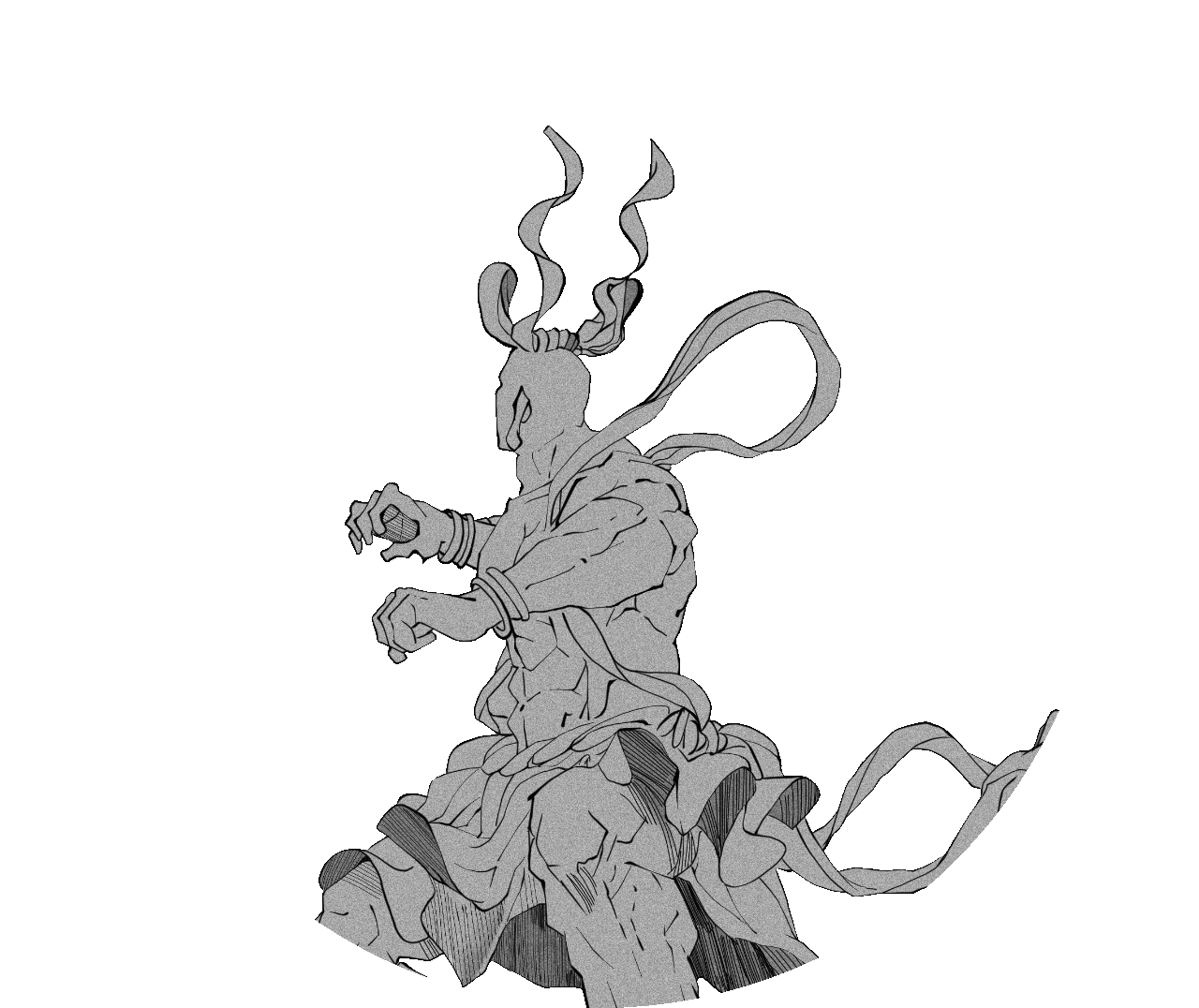













1. Project: Team member recruitment
2. Time: 2024.03.11-2024.03.16
3. Member: Jianhua Luo
4. Result: We selected 7 students out of 60 as regular players. They are Song Zhang, Yaqi Gao, Xinyu Zhu, Xiaoyuan Chen, Yinran Luo, Hanyue Liu, Xudong Tang. Moreover, we choose Yaqi Gao and Xudong Tang as the delegates to participate the iDEC festival in Cambridge University.
1. Experiment: The introduction of the cell therapy background
2. Time: 2024.04.01-2024.04.06
3. Member: Song Zhang, Yaqi Gao, Xinyu Zhu, Xiaoyuan Chen, Yinran Luo, Hanyue Liu, Xudong Tang
4. Summary: Anti-CD19 CAR-T cells have made remarkable achievements in the research of hematological malignancies. In addition to CAR-T, many other immune cells such as NK cells are also ideal choices for the treatment of tumors.
5. Attachment: The introduction of the cell therapy background
1. Experiment: Lecture research and report
2. Time: 2024.04.07-2024.04.27
3. Member: Song Zhang, Yaqi Gao, Xinyu Zhu, Xiaoyuan Chen, Yinran Luo, Hanyue Liu, Xudong Tang
4. Summary: We learned three lectures and made report in the team meeting. After that each player summarized the lecture they read.
5. Attachment: Apr. 02 Lecture research and report
1. Experiment: Experiment technique learning
2. Time: 2024.04.08-2024.04.22
3. Member: Song Zhang, Yaqi Gao, Xinyu Zhu, Xiaoyuan Chen, Yinran Luo, Hanyue Liu, Xudong Tang
4. Summary: We asked players learn the project relevant experiment technique and made summary. They were Construction of the plasmids of CAR, lentivirus packaging and NK-92 expansion.
5. Attachment: Apr. 03 Experiment technique learning
1. Experiment: Barcode designing
2. Time: 2024.04.23-2024.04.30
3. Member: Song Zhang, Yaqi Gao
4. Summary: We designed the barcode sequence with Python. There are five parts of the barcode sequence, and they are the forward primer, the reverse primer, a TaqMan Probe and two spacer sequences.
5. Attachment: Apr. 04 Barcode designing
1. Experiment: 23 sequences design
2. Time: 2024.05.01-2024.05.03
3. Member: Yaqi Gao, Song Zhang, Xudong Tang
4. Summary: We designed two types of specific ICD CAR sequences. They were the tandem IL2R-ICD CAR and Charge-attracting IL2R-ICD CAR.
5. Attachment: May. 01 23 sequences design
1. Experiment: Construction of the plasmids for CAR
2. Time: 2024.05.03-2024.05.05
3. Member: Yaqi Gao, Song Zhang, Xudong Tang, Xinyu Zhu
4. Summary: The 23 sequences were constructed and purified using the Rapid DNA Ligation Kit (Genstar), NucleoBond Xtra Midi Maxi EF plasmid purification kit (Macherey-Nagel 740420.10) to lay the foundation for subsequent CAR-NK construction
5. Attachment:May. 02 Construction of the plasmids for CAR
1. Experiment: Lentivirus Package
2. Time: 2024.05.06-2024.05.09
3. Member: Xinyu Zhu, Xudong Tang, Song Zhang
4. Summary: We aimed to produce lentivirus for subsequent gene transduction. Lentiviral plasmids were transfected into Lenti-293T cells using the calcium phosphate method, and virus supernatants were collected, concentrated, and purified for storage and future use.
5. Attachment: May. 03 Lentivirus Package
1. Experiment: Infection of NK92 cell line
2. Time: 2024.05.10-2024.05.11
3. Member: Hanyue Liu, Xudong Tang, Xiaoyuan Chen
4. Summary: We aimed to prepare NK92 cells at 1×107 cells/mL, plate them, and infect them with the virus using polybrene, followed by incubation at 37°C for 12-16 hrs.
5. Attachment: May. 04 Infection of NK92 cell line
1. Experiment: NK92 expansion and flow cytometry sorting
2. Time: 2024.05.12-2024.05.14
3. Member: Xiaoyuan Chen, Yinran Luo, Xudong Tang
4. Summary: We aimed to culture NK92 cells, passage them, and label with FLAG-APC antibody. Cells were sorted based on CAR expression, expanded, and analyzed by flow cytometry.
5. Attachment: May. 05 NK92 expansion and flow cytometry sorting
1. Experiment: Secondary flow cytometry sorting
2. Time: 2024.05.21-2024.05.22
3. Member: Xiaoyuan Chen, Yinran Luo, Song Zhang, Xinyu Zhu
4. Summary: We aimed to perform a second flow cytometry sorting on NK92 cells for further purification, following initial expansion and FLAG-APC antibody labeling.
5. Attachment: May. 06 Secondary flow cytometry sorting
1. Experiment: NK cells co-cultured with tumor cells
2. Time: 2024.05.21-2024.05.28
3. Member: Xiaoyuan Chen, Xinyu Zhu, Yaqi Gao
4. Summary: We planned to co-culture NK92 cells with tumor cells, divided into three groups (A, B, C) for comparison, and assess NK92 expansion by photographing and analyzing EGFP fluorescence.
5. Attachment: May. 07 NK cells co-cultured with tumor cells
1. Experiment: Cell proliferation assessment
2. Time: 2024.05.10-2024.05.29
3. Member: Xinyu Zhu, Song Zhang, Yinran Luo
4. Summary: We monitored cell growth by collecting samples daily (Day 1-Day 7), counting cells by an automated cell counter, calculating fold expansion, and plotting a growth curve to analyze proliferation and kinetics.
5. Attachment: May. 08 Cell proliferation assessment
1. Experiment: Enrichment and screening of dominant sequences
2. Time: 2024.05.28-2024.05.29
3. Member: Xinyu Zhu, Hanyue Liu, Xiaoyuan Chen
4. Summary: We performed PCR on samples from Experiment Record 7 using pre-designed barcodes to assess CAR-NK cell expansion, and then create diagrams for comparative analysis with the results from Record 7.
5. Attachment: May. 09 Enrichment and screening of dominant sequences
1. Experiment: LDH assay for measuring cytotoxic activity
2. Time: 2024.05.26-2024.05.31
3. Member: Xinyu Zhu, Yaqi Gao, Xiaoyuan Chen
4. Summary: We used an LDH assay kit to measure the cytotoxicity of CAR-NK cells against various tumor cells at different effector-to-target.
5. Attachment: May. 10 LDH assay for measuring cytotoxic activity
1. Experiment: Western Blot
2. Time: 2024.06.01-2024.06.03
3. Member: Hanyue Liu, Xudong Tang, Yaqi Gao
4. Summary: Western blot is a technique for detecting specific proteins in a sample, involving separation by gel electrophoresis, transfer to a membrane, and identification using antibody probes.
5. Attachment: Jun. 01 Western Blot
1. Experiment: LDH assay
2. Time: 2024.06.04-2024.06.06
3. Member: Xiaoyuan Chen, Hanyue Liu
4. Summary: The LDH assay was used for quantifying cytotoxic activity by measuring the levels of lactate dehydrogenase enzyme released from intact cells into the culture medium upon cell membrane disruption, indicating cell death or damage.
5. Attachment: Jun. 02 LDH assay
1. Experiment: Investigation of NKR
2. Time: 2024.06.07-2024.06.09
3. Member: Song Zhang, Yaqi Gao, Xinyu Zhu, Yinran Luo, Xudong Tang, Xiaoyuan Chen, Hanyue Liu
4. Summary: We investigated NK cell receptors by reviewing literature and online resources to identify their corresponding ligands, clinical batch numbers, applications, and significance, providing a comprehensive understanding of NK cell receptor diversity and function.
5. Attachment: Jun. 03 Investigation of NKR
1. Experiment: Literature review of tumor ligands
2. Time: 2024.06.10-2024.06.12
3. Member: Yinran Luo, Song Zhang, Yaqi Gao, Xinyu Zhu
4. Summary: The process involves retrieving the expression levels of ligands for KIR and KAR in various cancer cell lines using target classification on the Protein Atlas website for comprehensive analysis.
5. Attachment: Jun. 04 Literature review of tumor ligands
1. Experiment: NKR sequence design
2. Time: 2024.06.13-2024.06.15
3. Member: Yaqi Gao, Song Zhang
4. Summary: This experiment involves applying the intracellular sequence from the first screening round to the second, modifying the NKR sequence, and constructing a new library.
5. Attachment: Jun. 05 NKR sequence design
1. Experiment: Construction of the plasmids for CAR
2. Time: 2024.06.16-2024.06.18
3. Member: Xiaoyuan Chen, Xudong Tang, Hanyue Liu
4. Summary: This experiment involves CAR plasmids by cloning NKR fragments into pRRLSIN-cPPT-PGK-GFP WPRE plasmids, digesting with restriction enzymes, ligating with T4 ligase, transforming into Stbl3, and purifying plasmids after sequencing verification.
5. Attachment: Jun. 06 Construction of the plasmids for CAR
1. Experiment: Lentivirus Package
2. Time: 2024.06.19-2024.06.20
3. Member: Song Zhang, Xinyu Zhu, Hanyue Liu
4. Summary: Lentivirus packaging involves culturing Lenti-293T cells, preparing a plasmid mixture, and transfecting with calcium phosphate using the CPT Transfection Kit, followed by incubation in a CO2 incubator to facilitate virus production.
5. Attachment: Jun. 07 Lentivirus Package
1. Experiment: NK92 cell infection
2. Time: 2024.06.21-2024.06.22
3. Member: Hanyue Liu, Yaqi Gao
4. Summary: The experiment involves inoculating NK92 cells, calculating and adding the required cell suspension to a 96-well plate, incubating to 50% confluence, then infecting with virus using polybrene to enhance infection, adjusting for MOI and virus titer.
5. Attachment: Jun. 08 NK92 cell infection
1. Experiment: Cell expansion and Flow cytometry sorting
2. Time: 2024.06.23-2024.06.24
3. Member: Song Zhang, Xudong Tang, Hanyue Liu
4. Summary: NK92 cells suspension from the stock is transferred to a tissue culture flask. Then it is incubated to expand. After the expansion, flow cytometry is used to sort the cells.
5. Attachment: Jun. 09 Cell expansion and Flow cytometry sorting
1. Experiment: Second round of flow cytometry sorting
2. Time: 2024.06.25-2024.06.26
3. Member: Song Zhang, Xudong Tang, Hanyue Liu
4. Summary: NK92 cells suspension from the stock is transferred to a tissue culture flask. Then it is incubated to expand. After the expansion, flow cytometry is used to sort the cells.
5. Attachment: Jun. 10 Second round of flow cytometry sorting
1. Experiment: Detection of the NKR
2. Time: 2024.06.27-2024.06.29
3. Member: Song Zhang, Yaqi Gao, Xudong Tang, Hanyue Liu
4. Summary: After the process of the co-culture, we detected the scFvs (including KIRs and KARs) on the NK cells’ surface.
5. Attachment: Jun. 11 Detection of the NKR
1. Experiment: Detection of the NKR
2. Time: 2024.06.29-2024.06.30
3. Member: Song Zhang, Yaqi Gao, Xudong Tang, Hanyue Liu
4. Summary: After the process of the co-culture, we detected the scfvs (including KIRs and KARs) on the NK cells’ surface.
5. Attachment: Jun. 12 Detection of the NKR
1. Experiment: The cytotoxic activity detected by LDH
2. Time: 2024.07.01-2024.07.07
3. Member: Song Zhang, Xudong Tang, Hanyue Liu, Xiaoyuan Chen, Xinyu Zhu, Yinran Luo
4. Summary: We detected the cytotoxic activity of NK cells which after two rounds of evolution by LDH, targeting at four kinds of cell lines.
5. Attachment: Jul. 01 The cytotoxic activity detected by LDH
1. Experiment: Activating signal pathway detected by Western Blotting
2. Time: 2024.07.08-2024.07.14
3. Member: Song Zhang, Xudong Tang, Hanyue Liu, Xiaoyuan Chen, Xinyu Zhu, Yinran Luo, Yaqi Gao
4. Summary: NK92 cells transduced with αMSLN eCAR sequence exhibited significant higher expression of p-JAK1, p-JAK3, p-ERK, p-STAT1, p-STAT3, p-STAT5, p-AKT.
5. Attachment: Jul. 02 Detect the activating signal pathway by Western Blotting
1. Experiment: Surface molecules detected by the flow cytometry
2. Time: 2024.07.15-2024.07.21
3. Member: Song Zhang, Xudong Tang, Hanyue Liu, Xiaoyuan Chen, Xinyu Zhu, Yinran Luo, Yaqi Gao
4. Summary: We used flow cytometry to detect the molecules on the cell’s surface.
5. Attachment: Jul.03 Surface molecules detected by the flow cytometry
1. Experiment: Human pancreatic tumor organoids culture and passage
2. Time: 2024.08.01-2024.08.09
3. Member: Xiaoyuan Chen, Hanyue Liu
4. Summary: The experiment aims to culture and passage human pancreatic tumor organoids. It involves processing tumor tissue samples, digestion, centrifugation, seeding in plates with Matrigel, monitoring growth, and subculturing the organoids at approximately 70% confluence.
5. Attachment: Aug.01 Human pancreatic tumor organoids culture and passage
1. Experiment: Co-culture of NK92 and human pancreatic tumor organoids
2. Time: 2024.08.10-2024.08.13
3. Member: Xiaoyuan Chen, Hanyue Liu
4. Summary: This experiment involves co-culturing NK-92 cells with human pancreatic tumor organoids to assess cytotoxicity, using a 48-well plate with a Matrigel layer and culture medium supplemented with Y-27632 and PGE2 for optimal growth conditions.
5. Attachment: Aug.02 Co-culture of NK92 and human pancreatic tumor organoids
1. Experiment: Assess human pancreatic tumor organoid lysis
2. Time: 2024.08.14-2024.08.16
3. Member: Xiaoyuan Chen, Hanyue Liu
4. Summary: The experiment aims to assess the damage of human pancreatic tumor organoids using LDH Detection Reagent. It involves preparing LDH assay working solution, setting up controls, treating cells with test compounds, collecting samples, and measuring LDH activity to determine cytotoxicity.
5. Attachment: Aug.03 Assess human pancreatic tumor organoid lysis
1. Experiment: Human hepatoma organoids culture and passage
2. Time: 2024.08.17-2024.08.20
3. Member: Xiaoyuan Chen, Hanyue Liu
4. Summary: The experiment details the culturing and passaging of human hepatoma organoids, including preparation of various culture media, tissue digestion, seeding in Matrigel, incubation, and passaging procedures when organoids reach approximately 70% density.
5. Attachment: Aug.04 Human hepatoma organoids culture and passage
1. Experiment: Co-culture of NK92 and human hepatoma organoids
2. Time: 2024.08.21-2024.08.25
3. Member: Xiaoyuan Chen, Hanyue Liu
4. Summary: The main content of the experiment is the co-culture of NK92 cells with human hepatoma organoids to assess their cytotoxicity effect of NK cells.
5. Attachment: Aug.05 Co-culture of NK92 and human hepatoma organoids
1. Experiment: Human hepatoma organoid lysis detection
2. Time: 2024.08.25-2024.08.31
3. Member: Xiaoyuan Chen, Hanyue Liu
4. Summary: The experiment evaluates human hepatoma organoid damage utilizing LDH detection reagent by monitoring LDH release from damaged cells.
5. Attachment: Aug.06 Human hepatoma organoid lysis detection
1. Experiment: Construction of in situ tumor models
2. Time: 2024.09.01-2024.09.09
3. Member: Hanyue Liu, Yinran Luo
4. Summary:Pancreatic cancer cells AsPC1 were injected intraperitoneally into each mouse to construct in situ tumor models.
5. Attachment: Sep.01 Construction of in situ tumor models
1. Experiment: Construction of in situ hepatic tumor models
2. Time: 2024.09.10-2024.09.15
3. Member: Xinyu Zhu, Song Zhang
4. Summary: To evaluate the impact of inhibitory signal-activated CAR-NK cells on in vivo anti-tumor activity, an in-situ tumor-bearing mouse model of liver cancer was established by inoculating Hep G2 cells into NCG mice.
5. Attachment: Sep.02 Construction of in situ hepatic tumor models
1. Experiment: Adoptive cell transfer therapy targeting pancreatic cancer
2. Time: 2024.09.15-2024.09.20
3. Member: Yaqi Gao, Xiaoyuan Chen
4. Summary: NK92 cells and KARs/KIRs CAR-NK cells were delivered intravenously to the Model mice, pre-inoculated with luciferase-expressing HepG2 cells subcutaneously.
5. Attachment: Sep. 03 Adoptive cell transfer therapy targeting pancreatic cancer
1. Experiment: Adoptive cell transfer therapy targeting liver cancer cells
2. Time: 2024.09.21-2024.09.25
3. Member: Song Zhang, Xudong Tang
4. Summary: NK92 cells and KARs/KIRs CAR-NK cells were delivered intravenously to the Model mice, pre-inoculated with luciferase-expressing HepG2 cells subcutaneously.
5. Attachment: Sep.04 Adoptive cell transfer therapy targeting liver cancer cells
1. Experiment: Tumor volume detection
2. Time: 2024.09.25-2024.09.30
3. Member: Yinran Luo, Xinyu Zhu
4. Summary: Tumor diameters were recorded using a digital vernier caliper every 3 days.
5. Attachment: Sep. 05 Tumor volume detection